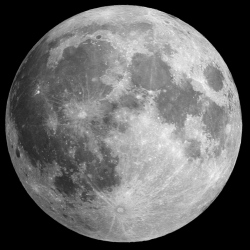
Senior staff from NASA’s Space Portal Office, the arm of the agency tasked with aiding and encouraging industry, academic and government collaboration with NASA, have called upon NASA to develop a Lunar base, saying the project is both feasible and affordable with current or soon-to-be-completed technologies.
Writing in the journal New Space, NASA Ames Research Center Space Portal Office chief systems engineer Bruce Pittman, lead for integrative studies Lynn Harper and technical operations manager Mark Newfield, as well as Daniel Rasky, chief of the Space Portal Office, said that a Lunar base would function as “a clear, achievable, and highly engaging next step” for NASA.
“Pursued under the feasibility proof of ISS, using best practices extracted from its build and operation, and combined with the current and emerging capabilities from the traditional and emerging aerospace industry, the Lunar Station is the logical next step in space development,” they wrote.
Acknowledging similar Moon base proposals by the Chinese, Russian and European space agencies, the writers argued that the project would keep both the US public engaged in space and maintain NASA’s position as a leader in space research and exploration ahead of its mission to Mars.
“This next step must serve as an enabling pathway for NASA’s ultimate goal of human missions to Mars and human or robotic exploration and development of asteroids and other planetary bodies,” they argued.
They estimated that the Lunar station would take around five years to build at a cost of around $2bn a year to construct and run, making it achievable within a short period without the need for additional funding.
It would also open up the Moon and cis-Lunar space to commercial development, allowing the private sector’s long-anticipated advancement into space to rapidly advance.
“In order for lunar development to become a reality in the near term, there is a clear need for the government to make key investments to lower technical and financial risks. Once this occurs, then the private sector can step forward and make the investments necessary to grow and expand the lunar economy,” they said, adding that the internet, the US highway system and utilities had all been developed using a similar model.
The article’s authors propose that the station would be constructed using a combination of additive manufacturing and Bigelow Aerospace’s expandable habitat modules, one of which will be tested on the International Space Station later this year.
First a series of unmanned precursor missions would be undertaken, using robots to determine suitable sites and to capture valuable data about resources. Next a solar power and communication station would be installed, and the site would be prepared using equipment similar to Earth-based excavators.
After this, habitat modules would be installed and the first crew would be transported from Earth. In time the crew presence would steadily increase, and further investment would be sought from private and international partners to expand the base’s capabilities.
“Key to this next phase of development is to explore options for developing commerce on the Moon. Some of the possible export options include water from the permanently shadowed craters, precious metals from asteroid impact sites, and even He [helium] that could fuel a pollution-free terrestrial civilization for many centuries,” they wrote.
“As transportation to and from the Moon becomes more frequent and cheaper, the lunar tourism mark should begin to emerge and could become a significant source of income in the future.”
